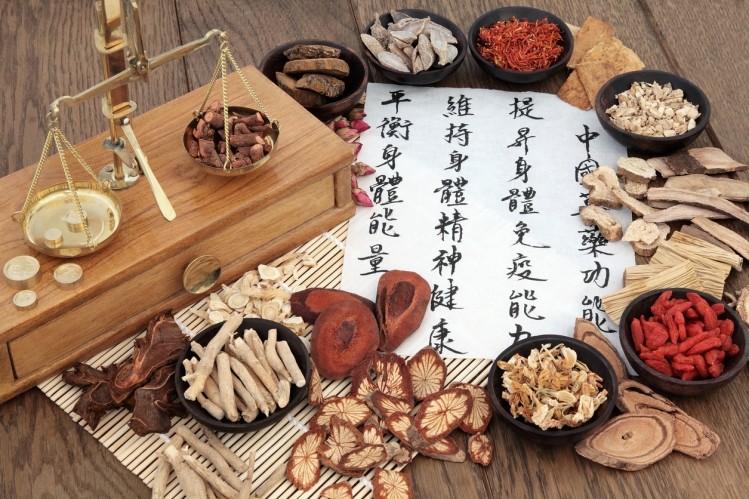Herbal supplements all too often ignore underlying principles, experts say

The increasing uptake of ingredients with roots in Chinese, Ayurvedic and other systems highlights the difficulty of fitting the square peg of traditional herbal knowledge into the round hole of modern product development. All too often, formulators pay only lip service to the principles that underlie these ingredients, these experts told NutraIngredients-USA.
Traditional herbal systems typically assign qualities to certain plants. Cooling or warming, moistening or astringent and so forth. These qualities can determine where that plant fits into the formulation scheme, which in the case of Traditional Chinese Medicine runs into thousands of formulas with thousands of possible constituents that amounts to hundreds of thousands of possible perturbations.
History spanning hundreds of years
TCM has been formally codified for hundreds of years. Roy Upton, founder of the American Herbal Pharmacopoeia, just returned from a turn as a presenter at an event in Hong Kong presaging the upcoming 500th anniversary of the birth of Li Shizhen, a towering figure in the history of TCM. In the mid 1500s Li put together a reference work on TCM, which is still ranks as one of the most comprehensive tomes of herbal knowledge ever assembled.
“He is considered the greatest compiler of Chinese herbal knowledge in Chinese history. He cited more than 850 different previous herbal authors. In most historical materia medica in the West they cite three people, or five,” Upton said.
Traditional herbal systems tend to be rooted in an ‘energetic’ view of the human organism. According to the Academy of Classical Oriental Sciences, disability or disease in this system is seen as an imbalance in the energy flow in an individual, and formulas are put together to address these concerns individually, for that particular patient. Plants are assigned qualities according to how they affect these energy imbalances in the body.
“Virtually all traditions of herbal medicine, Western herbal medicine included, describes herbs according to their 'nature.' That is where descriptors of actions such as hot and cold, moistening or drying, ascending or descending come in. Such actions are based on the inherent qualities of the herb itself, which are then applied to address the constitutional or pathological symptoms expressed by a patient,” Upton said.
“Some of the traditional herbal knowledge in many parts of North America, Central America and South America is similar in the sense of giving some qualities to plants. These systems tend to share some of that same classification,” said Ezra Bejar, an expert in Latin American herbs who is a member of the scientific advisory board for the American Botanical Council.
Looking toward the disease

In the West, as the understanding of chemistry advanced along with the understanding of the nature of communicable diseases, researchers began to look away from the nature of the patient toward the nature of the disease itself. Cure the disease, attack the way it propagates in the body or is transmitted from one infected person to the next, and all will be well.
There is no denying the vast improvements in public health wrought by modern drugs and sanitary practices. But something was lost or at least overlooked, too, Upton said. Traditional systems looked at the whole person individually; Western medicine, which by extension has informed how many dietary supplements in Western markets are formulated, takes a one size fits all approach. You’ve got X problem, here is Y solution.
Along with the turn toward looking at disease processes as opposed to a holistic view of the person, Western medical ideas started to take a reductionist approach, Upton said. Herbal ingredients began to be plugged into a drug-like system according to how they could affect, ameliorate or interrupt these disease processes. It’s a long step away from their roots in traditional systems, in which herbal preparations were akin to food, both of which could affect the human organism in positive ways.
“A lot of these ingredients could be equally used in a nourishing soup or syrup as well as in a medicinal extract. For many botanicals, there was not a lot of distinction between food and medicine,” he said.
Tension between individual and mass market
Practicing herbalists in the West still use these traditional ideas. Formulas will be put together based both on the patient’s particular issue and his or her particular nature. For the same complaint, an upper respiratory infection, for example, a thin patient tending toward dry skin, hair and mucous membranes would need a different type of formulation than one who is fleshy, flushed and exhibits oily skin.
“The body type will drive the kind of herbs that one would use,” said Beth Lambert, CEO of Herbalist and Alchemist, a company that puts out a line of tinctures and other products formulated along traditional lines.
But those kinds of ideas don’t marry well with the way dietary supplements are marketed and consumed in the West, Upton admitted.
“When you are selling products over the counter you have to do the best you can. What’s the most common cause for fatigue, for blood sugar control issues, for blood pressure problems? Then you try to mix and match the herbs to hit the middle of those ideas,” Upton said.
Shotgun approach
But all too often, in that process, the underlying concepts are jumbled or ignored altogether. Lambert said David Winston, the master herbalist who is her company’s principal formulator, often is taken aback by what he sees when he walks the aisles of trade shows.
“The formulas sometimes look like people just picked up a book, opened it up and found a list of herbs,” she said.
It’s a shotgun approach that Upton said is still all too common in dietary supplement formulation.
“There are some companies that don’t have a clue. I like to call it the ‘everything in the kitchen sink and then some more’ approach. There is no rhyme or reason to some of these formulas,” he said.
“Over the years those companies don’t tend to last but they do tend to have excellent graphics and some exciting marketing concepts,” Lambert said.
Upton said he's not optimistic that the picture will change in terms of the market's adherence to traditional ideas of formulation.
“I do not see the magic bullet style of formulation changing. Yes, there are some companies who apply traditional principles, but most do not. Often just the opposite, I see greater and greater levels of reductionism such as making herbal products with nano technology,” Upton said.
And the consumers are becoming better informed and more often understand what to look for, Lambert said. And this is partially driven by the higher profile herbal ingredients and their effects have among health care practitioners.
“Every week I’m asking people how they heard about us and why they came to us,” Lambert said. “I get answers like I heard about from you my practitioner, my homeopath, my doctor. I think these practitioners are seeing what herbs can do and see things that work, over and over again.”
Traditional opportunity
Bejar said as overall herbal knowledge increases in the marketplace there is more and more interest in ingredients from traditional systems like those of South America. But there is still a long way to go before modern herbal dietary supplements more closely resemble their traditional forebears.
“There is still very little formulation know how. I have attempted to bring this knowledge and these ingredients to more companies because there is a huge opportunity,” he said.

















